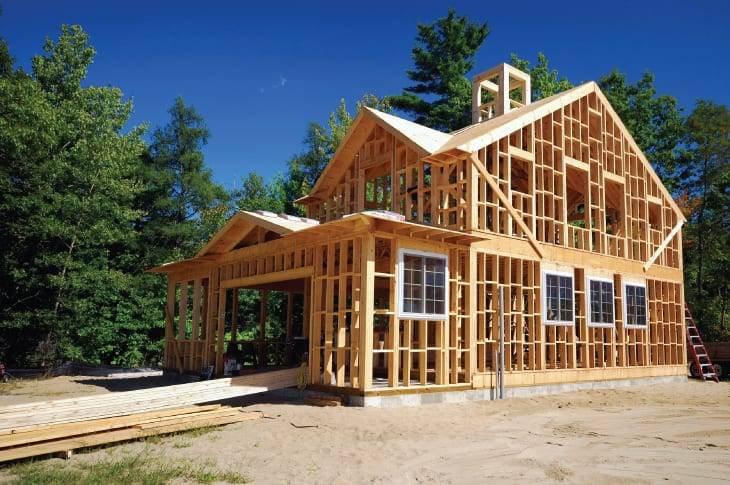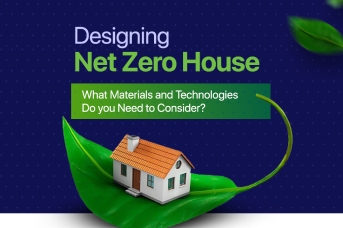
Net zero house is also known as net zero energy buildings, is a new concept with zero energy consumption which means that the total amount of energy consumed by the building equalizes the amount of power generated on the renewable site using green technologies like solar panels, high-efficiency windows and insulation, and heat pumps. The international energy agency most commonly uses the term “Net zero energy” with the term “zero net” This concept can be applied to any building, irrespective of size and location.
The idea of a Net zero house began in the early 1990s and has since been developed by many architects, designers, and engineers around the world. The net-zero houses are just one example of how technology can be used to help address climate change.
This trend gained popularity because of a need for more sustainable living environments in our current society. The number of people who want to live green is increasing rapidly, and this trend provides them with an affordable option.
Materials Used in Net Zero House
The kind of material used in home construction services in Surrey BC plays a major role in achieving energy efficiency as only this factor accounts for 11% of the building’s total emissions. The following materials have been used in the net energy house to gain the required efficiency.
Glulam (Glue Laminated Timber)
Glue laminated timber is an environment-friendly solution for constructing sustainable homes. It is the main structural element used in net-zero houses to reduce carbon footprint in place of concrete and steel. It reduces the structure’s overall weight and causes less damage in case of any natural disaster.
Eco Roof
Roofs of the net zero houses are made up of local plants which are used to insulate the building as well as keep them cool during summer. They are a great source of water, oxygen, and carbon dioxide absorption. Water is stored in small tanks and later used in watering plants.
Hollow Blocks
Hollow blocks are more environmentally friendly as compared to traditional red blocks as they don’t need to be burnt and are made through automatic machines. Additionally, it reduces the overall weight of the building and the time taken in constructing the building. Hollow blocks have great insulation properties. This feature ultimately helps to prevent energy loss. Hollow blocks are filled with concrete and smaller rebar.
Solar-integrated Roof Panel
The solar-integrated roof panel is made up of an array of solar cells that are integrated into the top surface of a building’s existing roofing system, which helps to reduce the need for expensive rooftop solar installations. It provides many benefits to the homeowner. These benefits include lower energy bills, less maintenance, and even aesthetic appeal.
Solar-integrated roof panels are a great source of hot water. When the sun shines too high, a system is installed which mixes some cold water with the hot. Similarly, when the sunshine is low there is a backup of hot water in the system which makes a constant supply of hot water when needed.
Green Plaster
To maintain a significant amount of humidity inside the house a special category of green-colored plaster is used in the house which absorbs humidity from the atmosphere providing a well-maintained temperature level inside the house. In case someone wants to reduce the humidity level in their house cooling system in the house acts as the dehumidifying source by sending less air through the blowers which ultimately lowers the humidity level.
Technologies Used in Net Zero House
Rainwater Harvesting System
Rainwater harvesting systems are designed to collect, store, and reuse rainwater in order to reduce the demand for groundwater resources and improve water quality. They are usually located on rooftops or in cisterns, but they can also be built into the ground. It is beneficial in several ways, including filtering pollutants and reducing the demand for potable water.
Chiller System
The Chiller system in the house is used to drop the temperature of the water. The water is then sent through copper tubes to the coils and when they get chilled with cold water. They are connected to blowers available at different locations in the house and the house gets chilled.
Fireplace as Heater
In the traditional fireplace, smoke goes out through the chimney to reduce indoor pollution. However, in net-zero home construction services in Surrey BC, the fireplace works as a heater and is heating the whole house. Gas produced from the fireplace goes to the heat exchanges and is converted into the fresh air.
Windows Installation
Windows installations are done in such a way that during summers sun rays can’t enter inside the home and during winters maximum sun rays penetration can occur. Large window overhangs are done on the front side of the windows to avoid sun rays to penetrate inside the home.
Enhanced Natural Ventilation
Zero energy homes have advanced well ventilation systems in place. In the front and back sides of the home, windows open and close in the reverse direction thus providing natural ventilation.
Difference Between Green Building and Zero Energy Building
| Green Building | Zero Energy Building |
|---|---|
| Mainly focuses on reducing operational energy and neglects the embodied carbon emission during the construction process. | It is a self-sufficient building that produces zero net amount of energy during its operation. |
| It considers all environmental aspects such as recycling and reusing practices, use of ethically sourced materials, proper indoor air quality, efficient use of utilities, and use of modern designs that allow buildings to adapt according to changing climate. | The scope of net zero construction in Surrey BC focuses on energy consumption and production of equal or more amounts from renewable sources of energy. |
| It aims to reduce the overall energy consumption of the building. | It aims to design buildings with sustainability and environmental friendliness in mind. |
Limiting global warming to two-degree celsius has become the major target for global climate policy (also recommended in the IPCC climate report). In order to achieve this target. In order to achieve this target net-zero homes can play a significant role.


